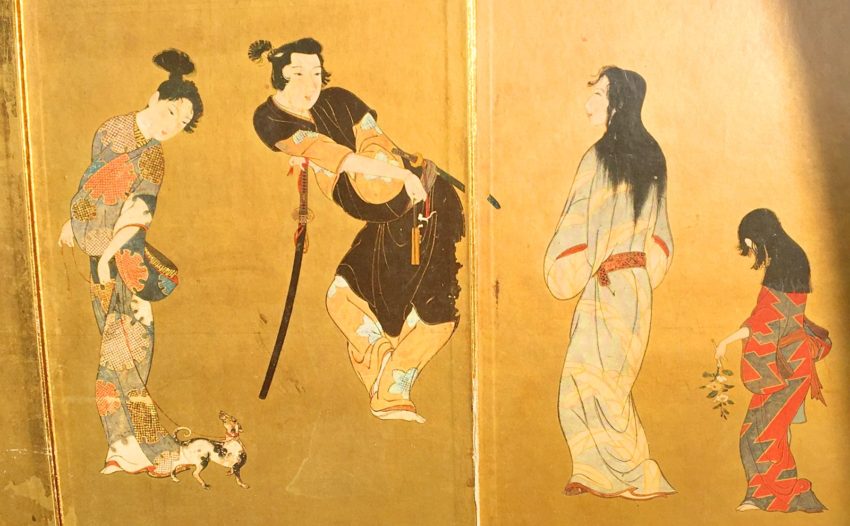It’s been said that the more a person learns about a particular subject, the more questions that person is left seeking answers to. This article is going to focus on the topic of Japanese sword lengths, specifically why they matter when discussing different blades.
Shaku: “You Mean Japanese Sword Lengths Are Standardized?”
There are three major categorizations of blade when considering Japanese sword lengths. Where the “foot” measurement comes from the average length of a man’s foot, the “shaku” is a unit of measurement that comes into play when describing a sword. It is used to measure the length of a sword’s blade, rather than its overall length from pommel to tip.
Another similarity between the foot and the shaku is that both have changed with time. Before America standardized the length of a foot in 1959, it ranged anywhere from 9.8 (25 cm) to 13.4 inches (34 cm). While the “modern” shaku comes out to exactly 11.93 inches (30.30 cm), shaku measurements taken prior to 1893 correlate to 13.96 inches (35.45 cm).
Also like the foot and its inches, the shaku has special sub-measurements. In the case of the shaku, these would be the sun and the bu. One sun is equivalent to one-tenth of a shaku, and one bu is equivalent to one-tenth of a sun or one-hundredth of a shaku. While the bu/sun/shaku system was used to measure other things in pre-Meiji Japan, like footwear and cloth, it has survived to this day solely for the purpose of measuring traditional Japanese weaponry like swords and spears.
“Okay, So I Know What a Shaku Is. Does it Make My Pre-1893 Katana No Longer a Katana?”
The answer to this particular question is… maybe. There are three main breakdowns in classification according to Japanese sword lengths:
- A blade that is no more than one shaku in length is classified as a tantoTANTO 短刀 "short sword" learn more....
- A blade that ranges anywhere between one and two shaku is considered a shoto, a.k.a. “little sword.” This includes the wakizashi.
- Any blade which exceeds two shaku in length is considered to be a daito, a “big sword.” This includes the famous katana blades.
Because some Japanese sword lengths are measured on curved blades, the shaku count is derived from measuring a straight line between the blade’s tip and its munemachi, the point where the blade meets its tang. While most shoto are wakizashi, some daito were forged so that their blades fell below their normal two shaku classification. These “bastard daito” are where the kodachiKODACHI 小太刀 "small tachi sword" learn more... originate from.
Knowing these terms, the name behind the Edo samurai’s daisho kit probably makes a bit more etymological sense. It is literally a pairing of a big sword with a little sword.
“That’s It? There Are Only Three Categories of Japanese Sword Lengths?”
Well, not exactly. Coming back to the daito, while the “floor” length of two shaku was firmly established, the “ceiling” had no such limits. Any blade that goes beyond three shaku in length is considered an exceptionally long daito. This is where terms like the odachiODACHI 大太刀 "large tachi sword" learn more... and nodachiNODACHI 野太刀 "field sword" learn more... come into discussion. Odachi means “great sword” and nodachi means “field sword,” likely because you could probably do a good job of slicing up a field of wheat with one.
Translations of the infamously skilled swordsman Miyamoto Musashi’s The Book of Five Rings describes the nodachi and odachi as “extra-long swords.” In practice, however the odachi was either used as a votive offering within a shrine, sometimes used in prayers involving war, or as weapons for samurai infantry.
“Wouldn’t an Exceptionally Long Sword Be a Problem to Carry and Wield?”
Yes, this is in fact the case. Prior to 1500, most swords were hung in a fashion known as jindachi-zukuri, with the weapon hanging off the belt via cord, with the edge pointing downward. Daito carried this way were referred to as tachi and ranged anywhere from 75 to 80 cm (29.5 to 31.5 inches).
The next big shift in carrying a blade, known as buke-zukuri, happened in 1600 and this method remained fashionable until 1867. It is at this point in time that the obi, a sash, became standard dress. The weapon’s bearer would carry his weapon through the sash with the blade pointing upward and usually paired with a second, smaller weapon sheathed in a manner similar to the main one.
The transition from jindachi-zukuru to buke-zukuri marks the change in designation from “daito” to “katana.” it is also worth remembering that carrying a weapon in the jindachi-zukuri style was not just a fashion statement, but acknowledgement of the rich history of cavalry battle Japan’s military had focused on. A blade hanging with the edge pointing up would be troublesome to manage, let alone unsheathe. Cords allowed the weapon to rest more parallel with the ground and the warrior’s mount, meaning there was less of a chance that the tachi would bind up when drawn.
Because nodachi exceeded three shaku in length and were too cumbersome to hang by a cord or thread through a sash, they hung across the samurai’s back in a manner similar to spears. (You can see how Japanese sword fittings became collectibles in and of themselves.) Because its blade was so long, a nodachi afforded an infantryman a similar degree of reach as a spear or polearm.
Reviewing the Names and Measurements
In case you’ve gotten lost somewhere along the way here, let’s take another quick look at the various common blade names and where they fit under the shaku system:
- Nodachis, odachis and jin-tachis are daito. They are all at least three shaku (90.9 cm or 35.7 inches) long.
- Tachis and katanas are also both daito. These weapons are at least two shaku (60.6 cm or 23.86 inches) long.
- Wakizashis are shoto. These blades range from one to two shaku (30.3-60.6 cm and 11.93 inches to 23.86 inches) long.
- Tantos and aikuchi are considered tanto as their blades are under one shaku (30.3 cm or 11.93 inches) in length.
- Any weapon with an “o-” or a “ko-” prefix is considered, respectively, a “great” or “small” version of the normal weapon. For example, a kodachi is a “small” version of an odachi (the name isn’t rendered as ko-odachi). It is also worth mentioning that some blades contained a smaller accessory blade within their sheathes known as kogatanas. When it comes to certain Japanese compound words, some letters change into other letters; in this case, the “k” in katana becomes a “g.”
“You Said That the Buke-zukuri Style Stopped Being Used After 1867. Why Did Japanese Sword Lengths Change?”
Several things happened in the Meiji Era to the role of swords in Japan, though none of them as a direct result of blade length.
- The rise of the pro-Western Meiji government.
- The dissolution of samurai as a social class.
- New restrictions were placed on sword ownership by Japanese civilians, restrictions which continue to this day. Civilians of any nation caught with a sword in Japan without the proper paperwork for ownership can face fines as large as ¥300,000 (around $2,700) and/or up to three years imprisonment, plus daily charges of ¥6,000 ($550) for “food and accommodations” during their incarceration. It is surprisingly common for a person to discover a sword, either because a home has burned down or someone has died and it comes to light that they had kept a sword that should have been destroyed after World War 2.
These changes also meant that any individuals who were allowed to own and carry a sword, such as the military, were to carry the weapon vertically from their hip, in a manner similar to Western naval officers known as “jindachi-zukuri”. While buke-zukuri style saw a return in 1953, this method of toting swords around was only allowed within the context of educational content when a wise sensei was demonstrating the old samurai ways.
What Japanese Sword Lengths Are in Your Collection?
There are a lot of options for collecting Japanese blades of various lengths. Most easily, you could get one each of the “main three” types, of one, two, and three shaku. Of course, now that you know that within these classifications there are many other varieties, the sky is the limit when selecting great weapons to add to your collection of beautiful Japanese sword pieces.

